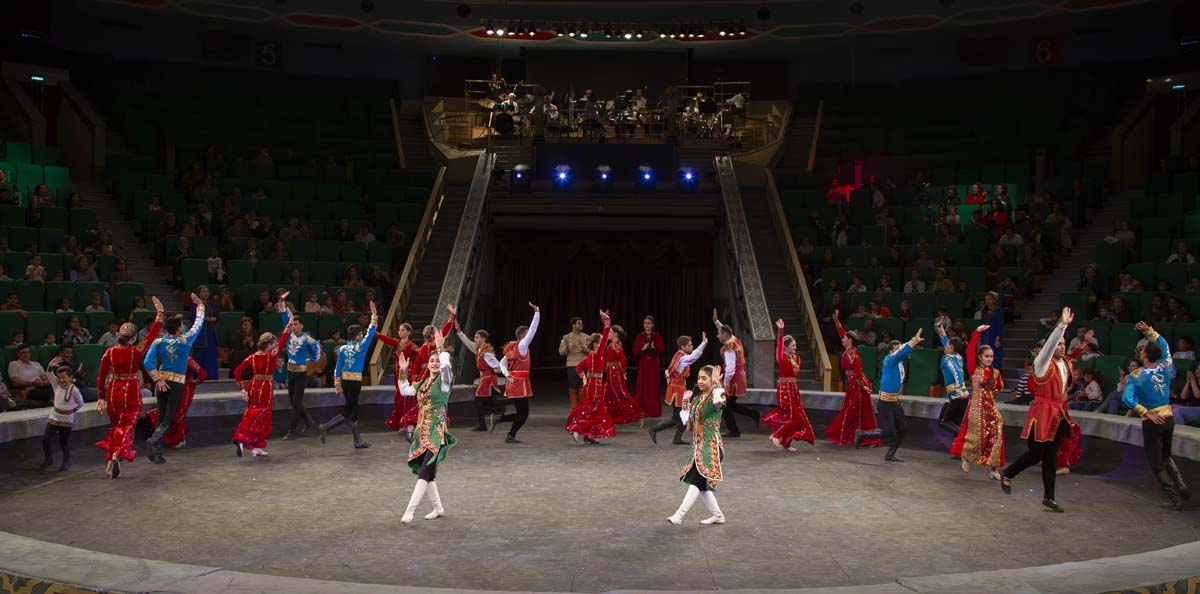Namazga-Depe and Abiverd, the famous archeological monuments in the foothills of the Kopetdag Mountains, are located at a distance of less than two kilometers from each other on the plain near the modern Turkmen city of Kaakhka.
But they are separated by a historical period of more than two millennia. When a large medieval city, known from the 7th century under the name Abiverd, was formed here, nothing remained of the ancient settlement on its southern outskirts: neither the name, nor traces on the surface of a huge hill over twenty meters high and with an area of over fifty hectares. Even today it can be seen from afar, towering above the horizon against the backdrop of a mountain range. Namazga is the largest monument of the Copper-Stone Age in southern Turkmenistan.
After excavations carried out in the fall of 1952 at Namazga-Depe, archaeologist, Professor Boris Kuftin from Tbilisi and his Ashgabat colleague Alexander Ganyalin identified six Namazgi complexes: from the Early Eneolithic to the Late Bronze Age, that is, a period lasting more than three thousand years. It was for so long that people continuously lived here, building one-story houses of mud bricks with wooden flat roofs and courtyards, separated by narrow streets. When the walls decayed, they were collapsed and exactly the same dwellings were erected from above. This is how a giant hill was formed over thirty centuries.
Scientists began their work 36 years after Namazga-Depe was discovered for science by the engineer-irrigator and soil scientist Dmitry Bukinich, who was passionate about archeology. In the fall of 1928, the hill was visited by academician Alexander Semyonov from Tashkent, then the Ashgabat archaeologists-pioneers Alexander Marushchenko and Sergey Ershov worked here, and soon after the war excavations began under the leadership of Professor Mikhail Masson, who entrusted this complex monument to the young talented specialist Boris Litvinsky, who later became years as an academician. A small detachment of Litvinsky, which included then the students Alexander Ganyalin and Kakadzhan Mukhammedberdyev, who later became prominent scientists, began the first season of excavations. And immediately, valuable evidence was obtained of the identity of the local and Anauan cultures. The same type of buildings, the same ceramics, clay figurines, jewelry, metal and stone products - all indicated that Anau and Namazga existed at the same time and were closely related.
The next cycle of excavations of Namazga was carried out by the archaeologist Anatoly Shchetenko already in the seventies. Thanks to a complex of studies, a periodization was created in general for the entire ancient agricultural culture of southern Turkmenistan, covering the eras between the fifth and first millennia BC.
The results of the Namazga-Depe excavations were a large number of finds that added to the collections of several museums. First of all, these are dishes, which at the early stage of Namazga were made by hand and painted with simple geometric patterns. In the middle of the 4th millennium BC, a new ceramic style appeared, polychrome ornaments, mostly black and bright red.
A special place among the finds made on the hill is occupied by terracotta figurines of people and animals, ornaments made of copper, bronze and stone, flint and bronze arrows and darts. According to the main version, people left the settlement, which over time became a city similar to the ancient cities of Mesopotamia because of the drought. Some of the local residents moved towards Margiana, where the old delta of the Murgab River was intensively settled by tribes, whose culture in many ways continued the traditions that existed in Namazga-Depe.
More than two thousand years passed before people began to settle again around the abandoned Namazga - apparently, due to the fact that the climate became milder and water appeared in the old channels. As a result, the city of Abiverd arose, occupying an area of about five hectares, the remains of the massive fortress walls of which can be admired today. The builders of Abiverd used already burnt bricks, fragments of which can be found in large quantities at the place where the fortress stood.
To be continued ...






